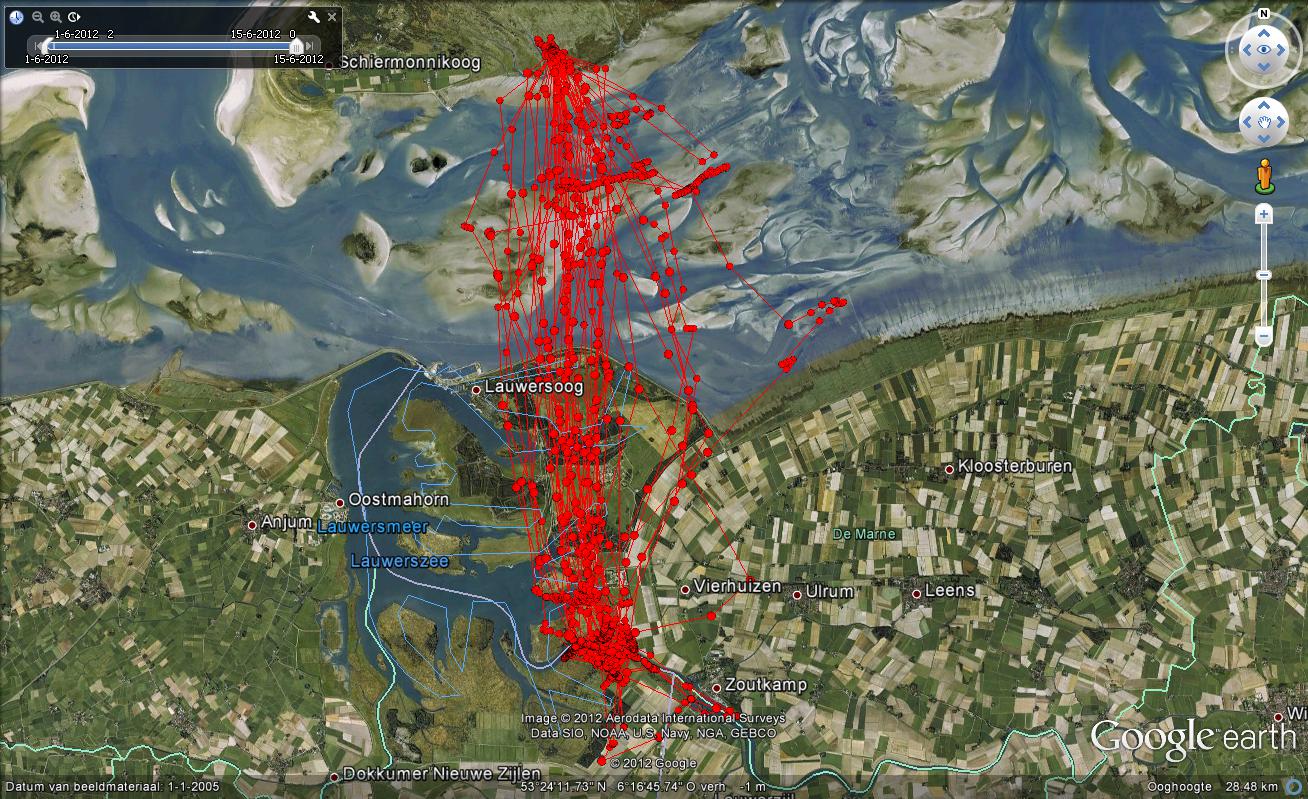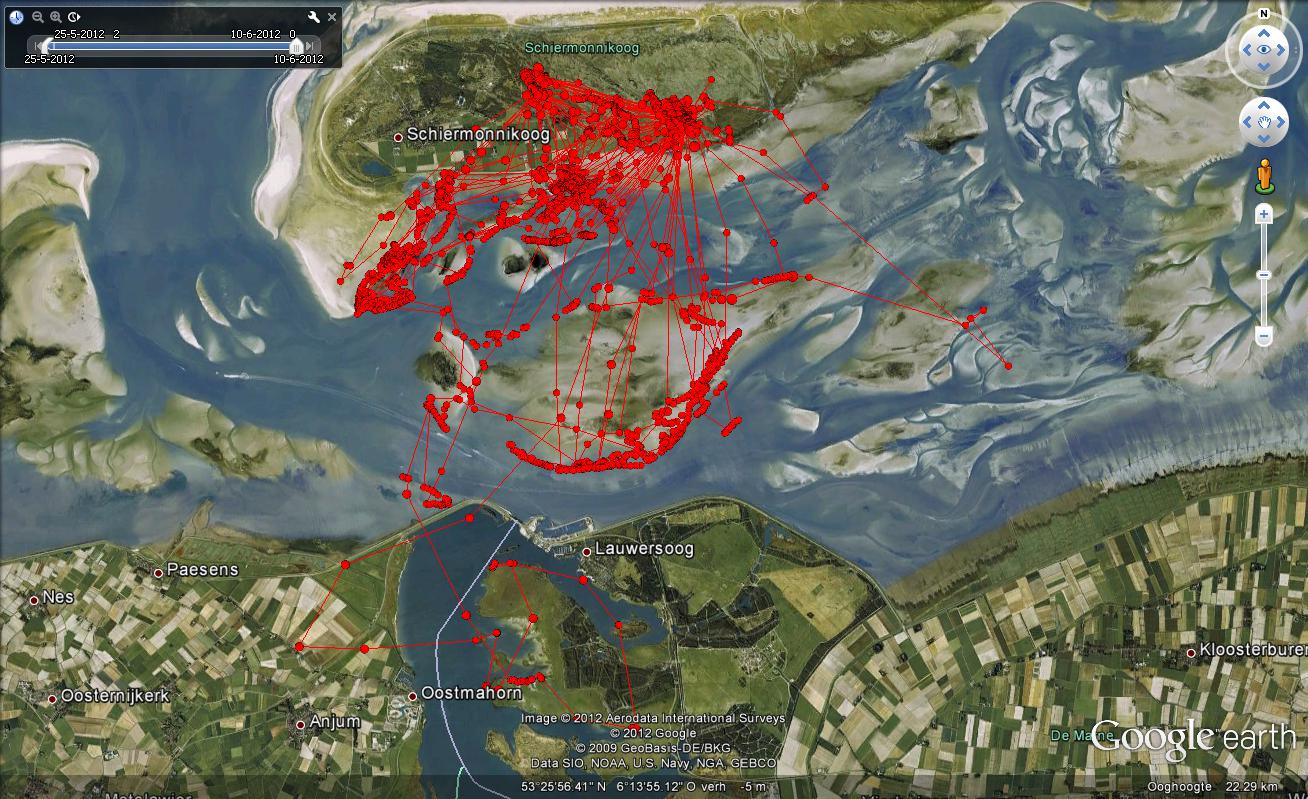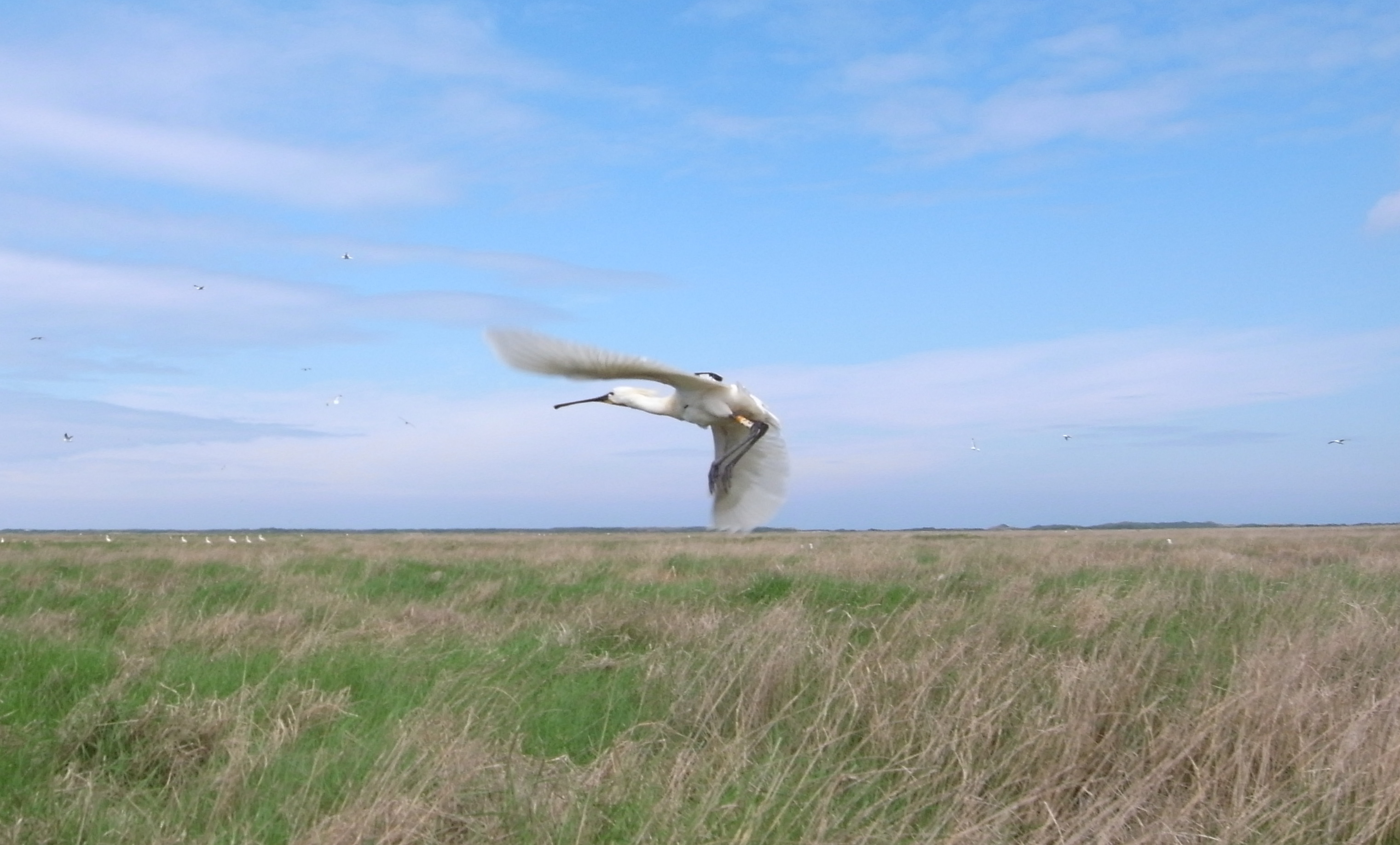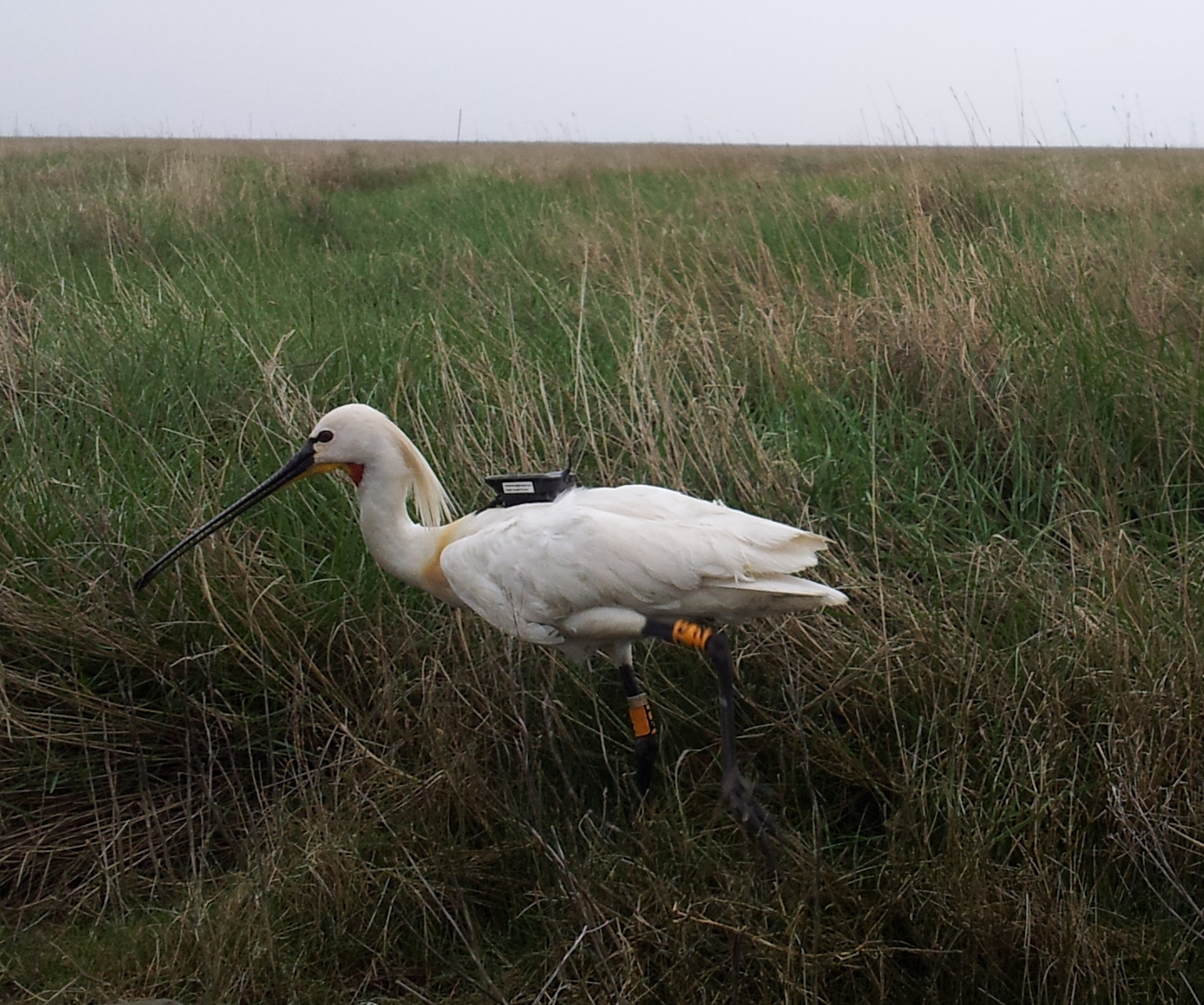How does habitat quality determine the breeding success and survival of Wadden Sea spoonbills?
Species: Eurasian Spoonbill
Since the 1980s the Eurasian Spoonbill population (Platalea leucorodia) has increased in numbers in the Netherlands. They have colonized all the Wadden Sea islands and are also doing well on the mainland. However, the growth of the population seems to have leveled off, and the question is whether this is an effect of density dependence, including an increasing shortage of food. We know that spoonbills eat small fish and shrimp in the Wadden Sea. Shrimp do not seem to be in short supply, so the problem might be the availability of habitat features such as small gullies that enable the catching of shrimp in high numbers.
The population is followed by counting breeding pairs on all the Wadden Sea islands. Survival is determined through the individual colour-ringing of spoonbills followed by the resighting of these individuals. Ring-resightings are done throughout the whole flyway from Denmark to Senegal by professionals and amateurs. To understand the high adult mortality during spring migration, 7 adult spoonbills were fitted with GPS tags in spring 2012 on the Dutch island of Schiermonnikoog. The tags will record the birds’ geographic position every 40 minutes.
The data collected from all 7 spoonbills from spring until mid-September was downloaded, and the preliminary data show that individuals have very different feeding strategies, as shown in the two maps below. Three of the birds flew to Lauwersmeer lake every night to forage, a round-trip flight of 30 kilometers. With a tailwind it took the birds around 8 minutes, while with a headwind it took them approximately 34 minutes. The other birds foraged mostly in gullies on the mudflats located southeast and southwest of Schiermonnikoog, with every bird foraging in its ‘own’ specific area. We also hope to be able to download the GPS tracking data collected in Mauritania where the birds will winter when they are back in the breeding colony in spring 2013.

Visualization of tracking data for a foraging spoonbill mainly traveling from the island of Schiermonnikoog south to the Lauwersmeer lake during the 2012 breeding season

Visualization of tracking data for a foraging spoonbill mainly traveling from the island of Schiermonnikoog to the mudflats located directly to the south during the 2012 breeding season
The project is funded by the Wadden Fund project Metawad‐1.
Related publications:
Lok et al. 2011. The paradox of spoonbill migration: most birds travel to where survival rates are lowest. Animal Behaviour 82: 837-844.
.
Lok et al. 2009. De lepelaarpopulatie van de Wadden komt het einde van de groei in zicht? Limosa 82: 149-157.
Latest highlights

Overwintering and foraging areas used by a 24-year old Eurasian spoonbill
Wednesday, April 18th, 2018
Contact Persons:
Otto Overdijk, Werkgroep Lepelaar o.overdijk@knid.nl
Willem Bouten, Universiteit van Amsterdam w.bouten@uva.nl
.
Conditions of Use: We kindly ask you to respect the intellectual property rights of the academics posting their work on this website. As such, information and content, including images and data, provided on this website may not be copied, reproduced or republished in any form without the express written permission of the UvA-BiTS manager (UvA-BiTS@uva.nl).
.






